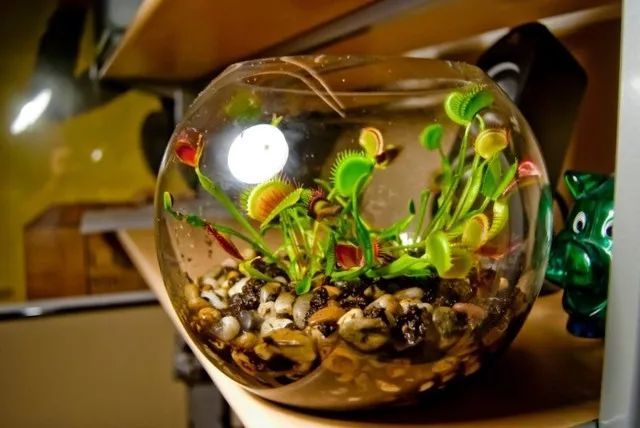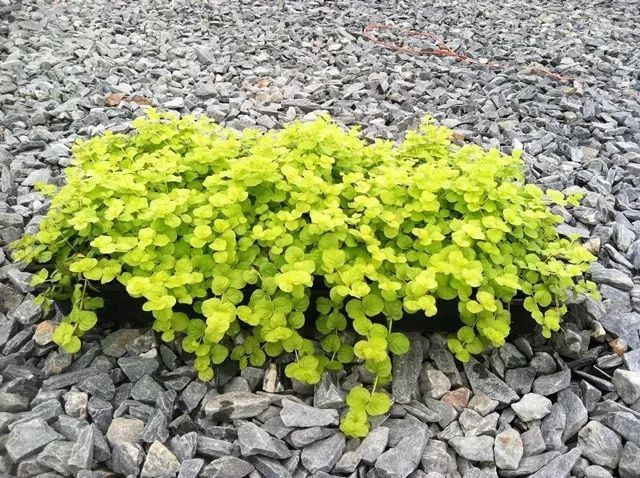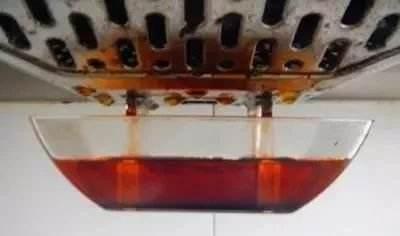This kind of plant has to be fed with worms, and the flycatcher raised on the windowsill can also blossom in pots.

Flytrap is a very special carnivorous plant. It originally grows in tropical swamps and likes to grow in wet, acidic and barren sandy soil. Flytrap also needs soil and photosynthesis to grow, and eats insects just to supplement nutrients. This also makes it a well-preserved indoor potted plant.
1. Choose a plastic basin with good drainage
Flytrap needs a lot of water in the process of growth, but if the water in the flowerpot is easy to breed mold and cause root rot, it is difficult to cultivate it in a flowerpot with drainage holes.
Clayey soil is very difficult to cultivate flycatcher, must be cultivated with loose and drained sandy soil, the nutrients in the soil do not need to be too high, to avoid the use of overfertile soil, otherwise it will affect the growth of flytrap.
As the flytrap plant grows, you need to change the pot of the flytrap to adapt it to the new environment.
two。 Soil selection
Flytrap is to grow in barren, slightly acidic and drained sandy soil, you can use peat moss with river sand at 1:1, so the soil drainage is very good.
Do not use common nutritious soil or pile-up soil to cultivate flycatcher, let alone add fertilizer, overnutrition is harmful to plants, water moss can be used at this time, it is also called peat moss, peat moss can wrap a lot of water, air permeability is very good, the proper addition of river sand or perlite can increase the drainage of the soil.
3. How often is it watered?
To keep the water moss moist and avoid drought, you usually need to be watered every few days, increase the frequency of watering when it is dry and hot, or put it on a tray, which is filled with some water.
To maintain the flytrap, it is necessary to avoid stagnant water in the soil and replenish it with soft water, including distilled water, Rain Water, and well water. if it is tap water, it contains alkaline substances harmful to the flytrap and needs to be stored in a container. it can only be used after two or three days.
4. How much light does the flytrap need?
The flytrap can also grow well in the semi-shade, but it needs at least 4 hours of light every day. If you want to promote the flytrap to grow more vigorously, you can give more light in all seasons except when it is hot in summer.
Avoid direct exposure or exposure when the temperature is too high. Flytrap is prone to sunburn in summer. You can put a sunshade net on it, or only give it morning and evening light, or you can keep it in the shade or windowsill.
If there is no direct sunlight, it needs to be replenished with fluorescent lights, which are about 10 to 20 centimeters away from the plant and can be turned off every 12 hours.
5. Feeding attention
If you keep flytraps outdoors, they can catch small insects by themselves, but it is difficult to catch them indoors, which requires occasional feeding.
Maintenance of flytrap can not be overfed, repeated feeding will weaken their energy, it is best to feed the insects, which is beneficial to the natural digestion of flytrap and can only be fed during the growing season.
Insects that can be fed include flies, mosquitoes, moths, spiders and ants. It is best to feed the fly. Put the insect on the flytrap clip and it will close automatically.
6. Dormant maintenance
Some fly traps blossom in spring, grow in summer and autumn, dormancy in winter, of course, they will not die, the state will be worse in winter, after the spring can be restored to health.
Winter needs to pay attention to cold protection, the lowest maintenance temperature is maintained at about 3-11 degrees, can be kept on the indoor windowsill, give appropriate light every day, the soil also needs to keep moist.
It's too cold in some places, son? Cover it with a transparent plastic film, but before it goes dormant, all the diseased leaves and black leaves need to be cut off, sprayed with fungicides, and then replenished with water before bagging.
7. Prune withered or dying leaves
If it is found that the leaves are dry or begin to turn black, they should be cut off in time to avoid fungal diseases, and it is very important to cut off these diseased and residual leaves in time. If it is found that the stems and leaves begin to wither and dry, or turn brown or black, they should be dealt with in time.
The black stems and leaves above should be cut off in time, and once mold is found, fungicides should be sprayed.
8. What if the flytrap blossoms?
Flytrap can also blossom, but it is only easy to blossom in natural marshes. Flytrap, as a potted plant, rarely blossoms indoors, and flowering is extremely rare. It is found that flowering should be cut off to avoid consuming more nutrients, otherwise the plant will grow weaker and eventually wither after the flowers wither.
As pictured above, the pedicel of the flytrap is round, and the stems and leaves are flat.
9. What happens if you put your finger on the flytrap?
Of course, the flytrap can't hurt you. If you put your finger on the flytrap clip, it will close automatically. As soon as your finger or anything touches the hair on the clip, the clamp will automatically close, but your finger may hurt the flytrap clip.
It usually takes a day or so for the flytrap to reopen after it closes. If you play with the clip too many times, it is likely to be broken because it only opens and closes several times throughout its life cycle.
- Prev

Seven species of creeping plants that can grow and bloom without much management can inhibit the growth of weeds.
If you do not want the ground of the yard to be covered with weeds and do not want to lay lawns or cement, you can choose to cultivate the following flowering plants, which are very ornamental, can grow in cracks in rocks, and do not have to be managed regularly.
- Next

It turns out that this thing in the kitchen is a good fertilizer for growing flowers. Green pineapple and hanging orchids have all exploded.
Many flower lovers like to raise foliage plants, the so-called foliage plants, to put it bluntly, potted plants that do not blossom, but the leaves are evergreen all the year round. The reason why people grow potted plants with leaves is mainly because they feel that the leaves are green all the year round.
Related
- Wuhan Hospital Iron Tree Blooming Result Was Instantly Frightened by the Gardener Master
- Which variety of camellia is the most fragrant and best? Which one do you like best?
- What is the small blue coat, the breeding methods and matters needing attention of the succulent plant
- Dormancy time and maintenance management of succulent plants during dormancy
- Minas succulent how to raise, Minas succulent plant pictures
- What are the varieties of winter succulent plants
- How to raise succulent plants in twelve rolls? let's take a look at some experience of breeding twelve rolls.
- Attention should be paid to water control for succulent plants during dormant period (winter and summer)
- Watering experience of twelve rolls of succulent plants
- Techniques for fertilizing succulent plants. An article will let you know how to fertilize succulent plants.

